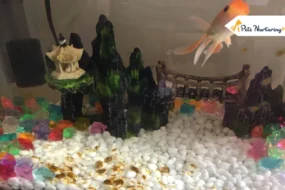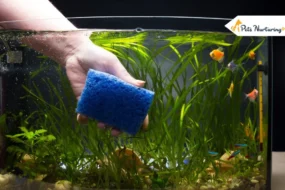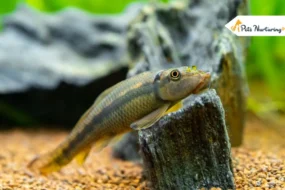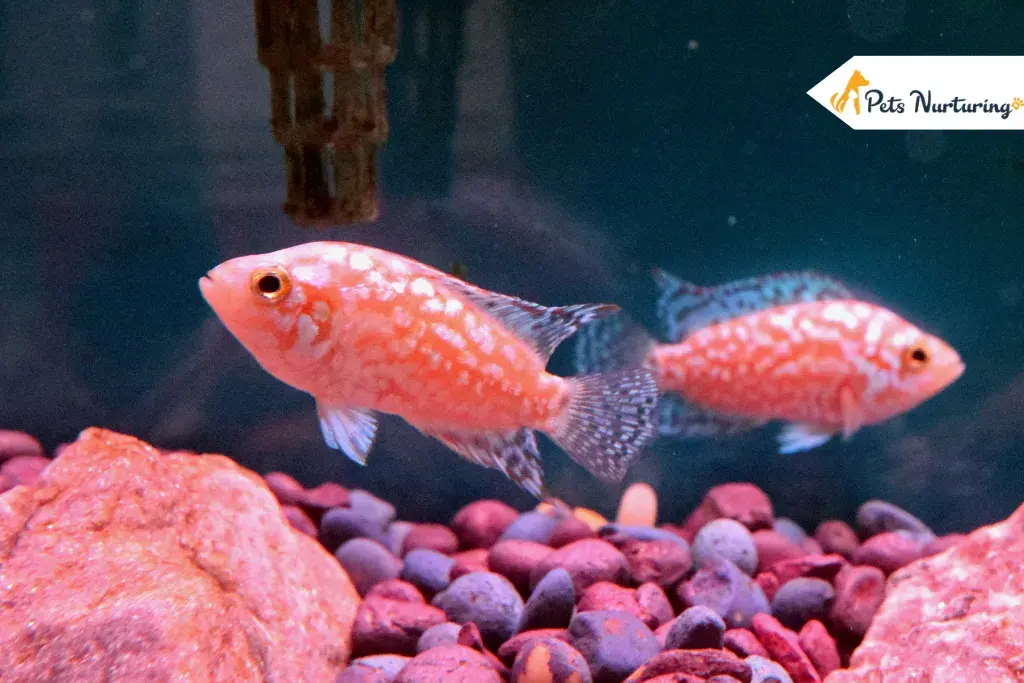
Jack Dempseys are freshwater cichlids, scientifically known as Rocio octofasciata. They are commonly referred to as Jack Dempsey since they show similar characteristics to the legendary heavyweight boxer William Harrison JACK Dempsey. The characteristics they share in common is their aggression and harsh looks. Even though these fishes are territorial and aggressive, they are an extremely popular choice of fish for aquarists due to their beautiful iridescent colors and ease of maintenance.
Jack Dempseys are very adaptable fishes that enchant the tanks they stay in, with their beauty. They can be easily taken care of by novice aquarists, especially after reading all this blog, as we will provide you with all the information on their care and maintenance requirements.
Overview Of Jack Dempsey Fish
Jack Dempsey Fish Overview
Scientific Name: Rocio octofasciata
Common names: Jack Dempsey, Jack Dempsey Cichlid, Jack Dempsey Fish, Boxer fish.
Native: Central America
Habitat: Freshwater
Care level: Easy
Temperament: Aggressive, territorial
Size: 8 – 15 inches
Lifespan: 12 – 14 years
Diet: Carnivorous
Colors or pattern: Green, pink, blue, purple, and grey with bright specs
Minimum fish tank size : 55 – 100-gallon
Temperature: 74 – 85 degrees Fahrenheit
pH of water : 6 to 7
Hardness of water : 9 – 20 dGH
Breeding: Egg layer
Common diseases: Freshwater itch, skin fluke.
Tankmates: Kissing Gourami, Angelfish, Cave Tetras, Green Terror, Oscars, Koi.
Origin and Habitat
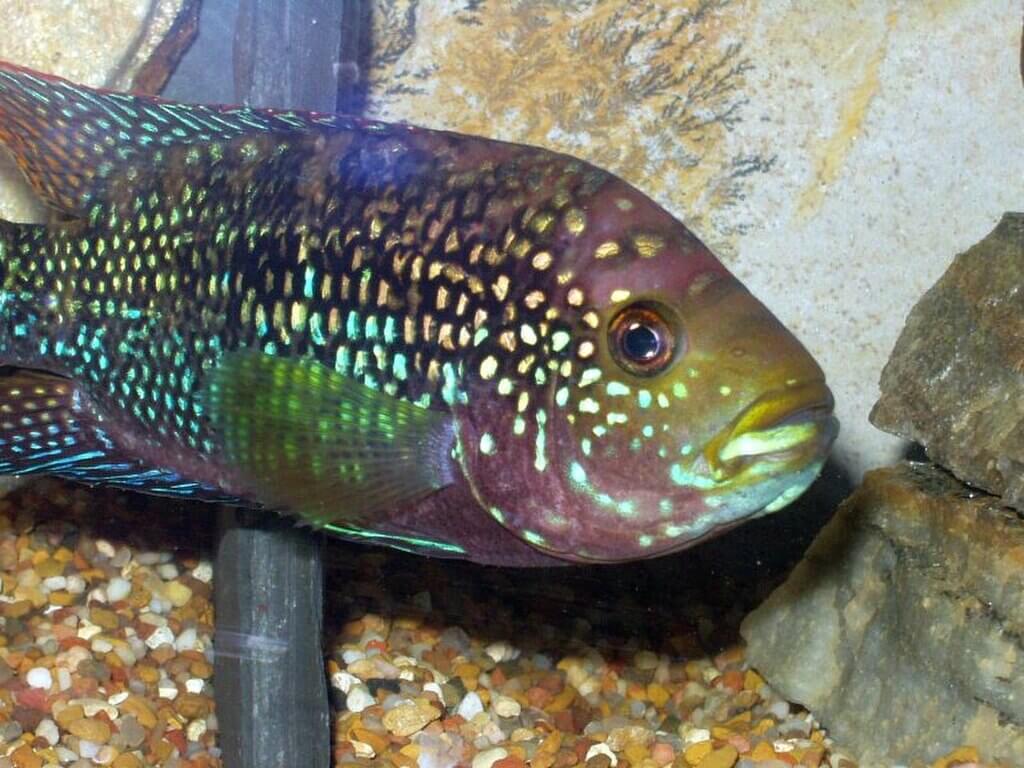
Jack Dempsey cichlids are native to Central American countries like Honduras, Mexico, Guatemala, and Belize. They live in the slow-moving freshwaters of these regions.
Although they are native inhabitants of Central America, they have now been introduced to the warm waters of various other places around the world.
They prefer a climate that is warm throughout the year and has plenty to feed on. You’ll find them in waters rich with worms, insects, crustaceans, and other smaller fishes.
You’ll find them in slow-moving freshwaters of lakes, swamps, canals and rivers. The water they inhabit is usually slightly acidic and murky with plenty of vegetation, low light exposure and a sandy or muddy substrate.
Jack Dempsey’s Behavior and Temperament
Well, you all must be familiar with the beauty and the beast, Jack Dempsey cichlid is both of those in one. These are beautiful fishes with intense and aggressive personalities.
These fishes don’t tolerate intrusion into their space by other fishes. They are extremely territorial which gets them in conflicts with their tank mates. They prefer to be alone in their tank.
Tankmates aren’t the only reason for their aggression, these fishes get aggressive for other reasons like a small tank without enough space for them to move around and live up to their fullest which may stress them out.
Jack Dempsey fish may show its aggression on its tank mates by biting, chasing, or bullying its tank mates. You need to be more careful if there’s a male in your tank, never put 2 males or one female with 2 males together in a single tank. This will turn your tank into a battleground real quick.
Jack Dempsey cichlids enjoy the middle and lower levels of water top level. They are more active during the day and rest in the night hours. They love to spend their time in lower water levels where they can lurk and hide between plants and within theirs. Caves.
Appearance
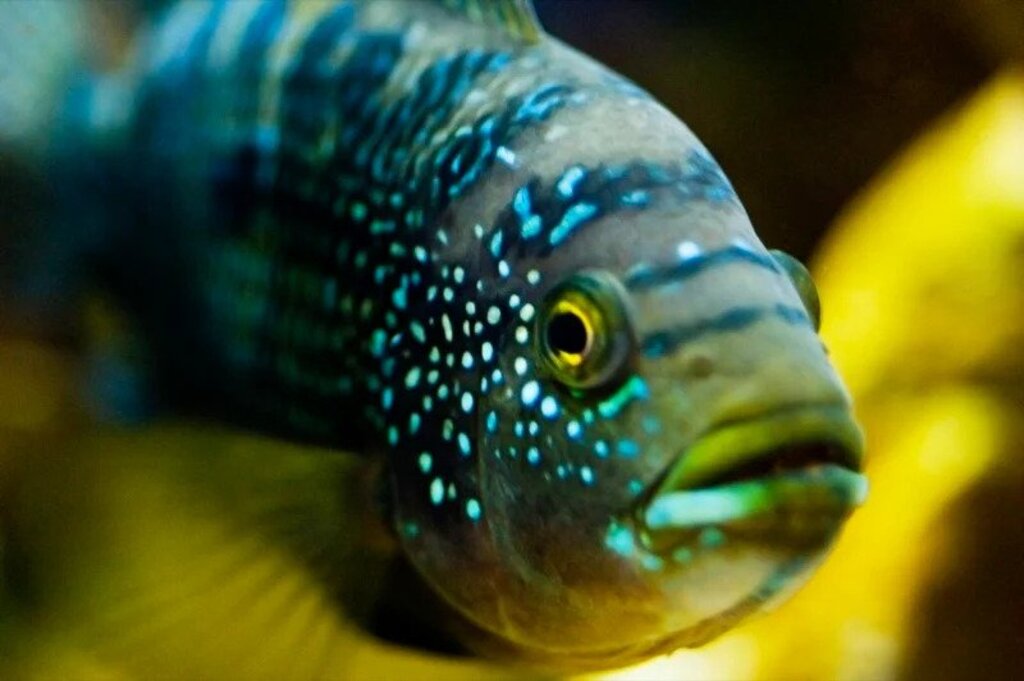
The iridescent colouration of the Jack Dempsey cichlid is what makes them so popular. They have a mix of blue and gold over their dark purple to greyish skin with greenish-yellow sparkles all over their body.
Jack Dempsey has a large oval body, with males being bigger and having longer fins than the females. They come in a variety of colors like blue, pink, green, silver, and purple. At a young age, they show a pale grey color with flecks of green over it.
As they mature into an adult, they show more of a purple colouration with green, white, or bluish flecks.
These fishes have a dark line between their eyes and a black band on their caudal fin which is shaped like a fan. They also adorn a lot of stripes all over their body. They are also known to change color depending on the surrounding conditions and their mood.
Their color becomes bold and bright during the breeding season to attract the opposite sex, whereas it becomes lighter and dull if the fish is not doing well and under stress.
They have pretty anal and dorsal fins, both of which are pointed and have red markings on their edges.
Electric Blue Jack Dempsey
The electric blue Jack Dempsey is one of the popular varieties of Jack Dempsey fish. Some of their characteristic traits combined with their color, make them unique.
They are bright blue, have a smaller size than the regular Jack Dempsey, and are comparatively less aggressive. Their body is rather compact which gives them a stocky appearance. They are up to 8 inches in length, thus smaller than the others.
Size: these fishes can reach up to 15 inches in length when they are fully grown and living in their natural habitat. In captivity, they may only reach half of their size, even as adults.
Male Jack Dempsey are usually bigger than their female counterparts. Males in captivity grow up to 9 inches long and females may touch the 7-inch mark.
Jack Dempsey Fish Price

They are widely available with a price range of 15$ to 45$ for a single fish. The prices may vary depending on the location, breeder, and especially the color of the fish.
Electric blue Jack Dempsey may cost you a little more than the common variety.
Care
Diet
They hunt their prey in the wild and have a carnivore diet that includes insects, crustaceans, worms or small fishes, which means they require a high protein diet even in captivity. You can use an automatic fish feeder so that your fish doesn’t have to skip its meal if you are busy or forget to put in their food.
You can feed them fish flakes or high-quality pellets designed for their specific needs. You can supplement their diet or feed them completely with live or frozen foods. This can include daphnia, brine shrimp, black worm, bloodworms, crickets, shrimps, grasshoppers, fruit flies, and small fishes.
Do not feed them a plant-based diet as it won’t meet their nutrition needs. A pinch of food twice daily will suffice. The thumb rule of feeding is to only put enough food that your fish can finish within a minute or two. Discard the leftovers to keep the tank clean and to avoid overfeeding your fish.
Adult fishes need two meals a day whereas juveniles can be fed thrice daily to support their growth and development.
Tank Size Requirements
Since they are naturally found in densely vegetated, murky water that is warm, slightly acidic, and has low light exposure, creating a similar condition in the tank will help your fish thrive.
The minimum size of tank required for your fish to be happy and comfortable is 80 gallons with an addition of 50 gallons corresponding to every other Jack Dempsey you add to the tank. Adding multiple fish to the tank is good and may reduce aggression but make sure you provide enough space for each one of them to claim their territories. If that’s not happening, the fishes may fight out of frustration. You can also add plant in aquarium.
Substrate and Plants
Sand, gravel and mud make the best substrate as they resemble the conditions of Jack Dempsey’s natural habitat. You can also add lots of plants and decorations as they work like enrichments by creating an ecosystem in the tank that is similar to that in the wild.
Select a lot of plants to provide spots for hiding, resting as well as exploring. Floating plants must be added as well to allow less light to pass through, which in result will create a low light habitat resembling their wild habitat.
Make sure the plants you add are deep-rooted or your Jack Dempsey will easily uproot them. Plants like Java fern, anubias, hornwort are a good choice.
You add caves, branches and other hollow decorations for your fish to hide or just enjoy their own personal space.
Water Parameters
The water in the tank should have slighty acidic water with a pH of 6 to 7. Filter must be added and set in a way that the water flow is low and slow moving. Bubblers aren’t much needed as these fishes prefer a slow current and less movement of water.
Adding a filter also helps the water stay clean and free of bio waste as these fishes create a lot of waste as they grow and it contains large amounts of ammonia which can be harmful for them if left to accumulate in the water they are living in.
The ammonia/nitrate level should be negligible or as low as 40ppm.
Water temperature must be maintained in the range of 70 to 85 degrees fahrenheit with the hardness of 9 to 20 dGH. You can install a water heater to maintain the warm temperature and a thermometer to monitor it with ease.
Hydrometer can also be installed in the tank to monitor other parameters. They cannot tolerate high salinity so make sure you do not add saline water to the tank.
Lighting
Do not light up the tank too much as the Jack Dempsey cichlid prefers dimly lit habitat you can add dim lights which depict the murkiness of their habitat.
Jack Dempsey’s Tankmates
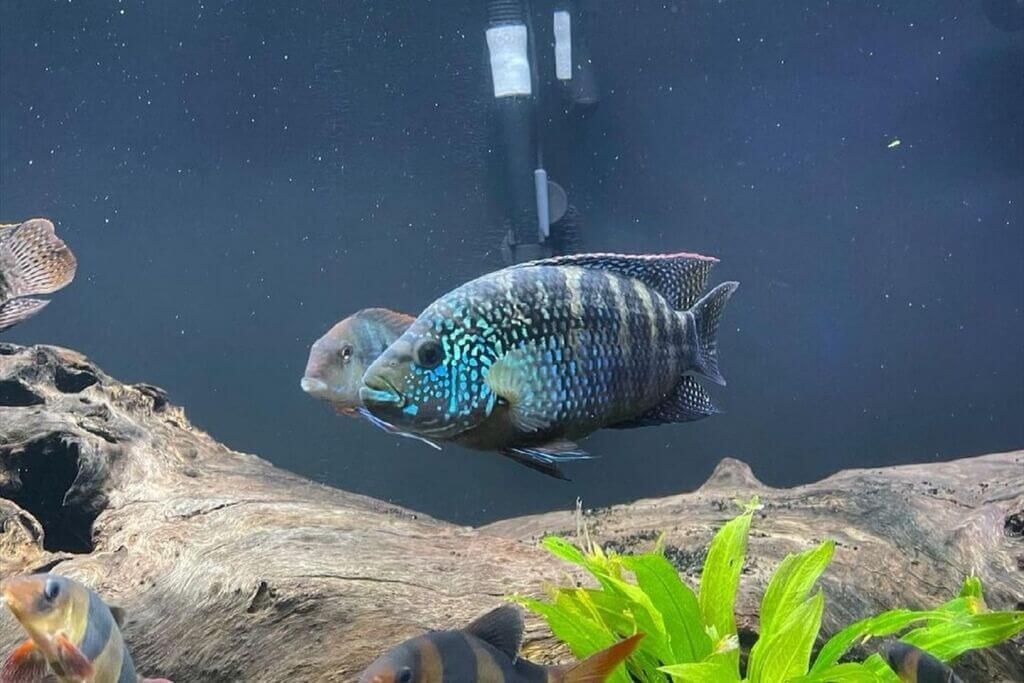
It’s important to choose similarly-sized fishes with a suitable temperament as a Jack Dempsey cichlid’s tank mate as these fishes have aggressive and territorial personalities.
Avoid housing them with small or docile/nervous fishes as they will be prone to bullying or in the worst-case scenario, will get eaten by your Jack Dempsey fish. Giant African land Snails and shrimps must also be avoided as they view these creatures as food.
Some good tankmates for your Jack Dempsey are as follows:
Silver dollar fish
Mbuna cichlids
Clown loaches
Angelfish
Convict cichlids
Electric blue acaras
Plecostomus catfish
Koi
Gourami
Cave tetras
Green terror
You can also house three to four Jack Dempseys together in a tank. Even with suitable tank mates, you may sometimes observe a fight starting up in the form of chasing, biting, etc. If this happens, please separate the fish to avoid further altercation.
Common Diseases
Just like every living organism, these fishes are prone to certain health issues. A few commonly observed ones are
- Head and lateral line erosion is also known as a hole in the head
- Skin Fluke
- Freshwater itch
If your fish shows any signs of physical discomfort, spots on their body, hiding, loss of appetite, please consult a vet and get them treated before it gets worse.
Final Words
I hope we have provided you with all the necessary information about this beautiful fish. You can consider having them if you can build a large enough tank for them and take care of their basic requirements. We advise against adding a Jack Dempsey to your already existing tank with smaller fishes.
For more information :








